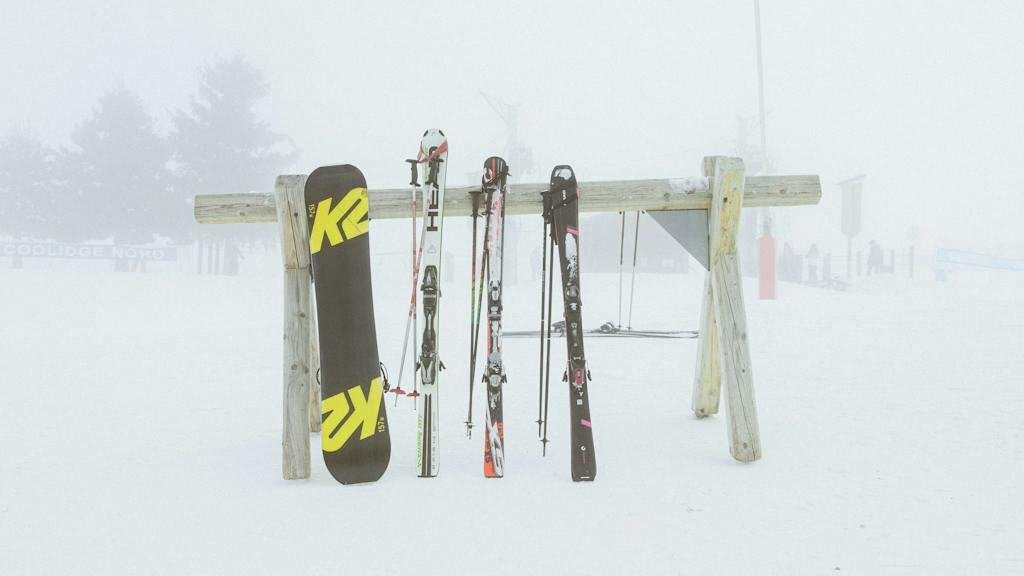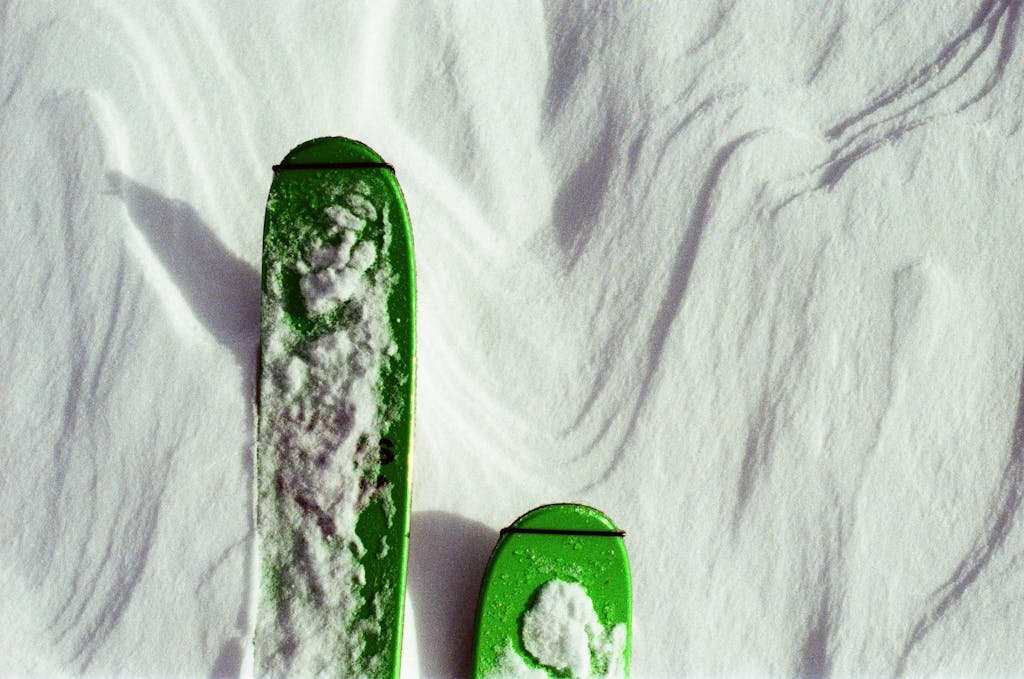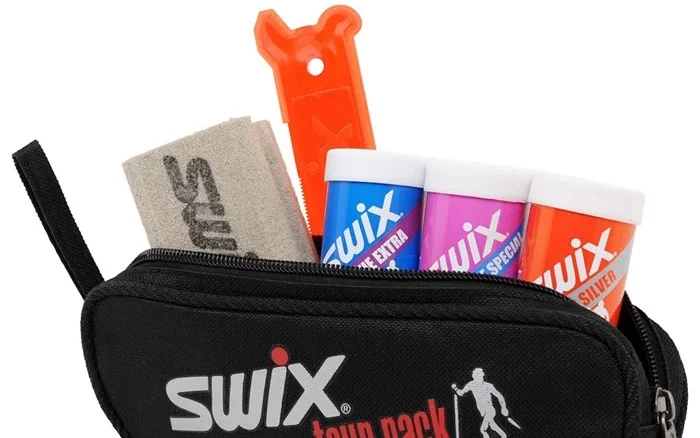How To Wax Skis

Skiing is an exhilarating winter sport that combines speed, skill, and a love for the great outdoors. Whether you’re a seasoned pro or just starting, one thing that is essential for optimal ski performance is learning how to properly wax skis. Waxing your skis not only helps improve glide and control on the slopes but also extends the life of your equipment.
In this article, we will guide you through the process of waxing skis, covering everything from understanding the importance of waxing to post-waxing care. So, let’s dive in and learn how to keep your skis in top condition!
Understanding the Importance of Waxing Skis

A common misconception among skiers is that ski wax is purely cosmetic, but in reality, it plays a crucial role in enhancing performance. Ski wax acts as a lubricant between the ski base and the snow, reducing friction and allowing for smoother gliding. This results in improved speed, maneuverability, and overall control on the slopes.
Additionally, wax helps protect the ski base from moisture and dirt, preventing damage and prolonging the life of your skis. It is important to note that waxing is not a one-time process but rather a regular maintenance routine to ensure optimal ski performance.
The Role of Wax in Ski Performance
Ski wax is designed to provide specific properties based on variables such as temperature, snow conditions, and skier ability. Different types of wax offer different benefits, including enhanced speed, grip, or durability. By selecting the appropriate wax for your skiing conditions, you can optimize your performance and experience on the slopes.
For example, if you’re skiing in cold temperatures, a harder wax is recommended as it will provide better durability and grip on icy surfaces. On the other hand, in warmer conditions, a softer wax will offer improved glide and speed. Understanding these nuances and choosing the right wax can make a significant difference in your skiing performance.
When and Why to Wax Skis
Now that you understand the importance of ski wax, you might be wondering when and how often you should wax your skis. As a general rule of thumb, it is recommended to wax your skis every 4-6 days on the slopes or whenever you notice a decrease in glide performance. This frequency may vary depending on factors such as snow conditions and personal preference.
Regular waxing not only improves glide but also helps protect the ski base from drying out and becoming damaged. It is especially important to wax your skis at the beginning and end of the ski season to provide optimal protection during storage.
When waxing your skis, it’s essential to prepare the base properly. This involves cleaning the base to remove any dirt or debris that may have accumulated during your previous ski sessions. Once the base is clean, you can apply the wax using either a hot waxing or a rub-on waxing method, depending on your preference and skill level.
Hot waxing involves melting the wax onto the base using an iron and then allowing it to cool and bond with the ski. This method provides a more durable and long-lasting wax job. On the other hand, rub-on waxing involves applying the wax directly to the base and then rubbing it in with a cork or a special applicator. While rub-on waxing is quicker and easier, it may not last as long as a hot wax job.
By regularly waxing your skis and selecting the appropriate wax for your skiing conditions, you can ensure that your skis perform at their best, providing you with a smoother, faster, and more enjoyable skiing experience.
Different Types of Ski Wax
Not all ski waxes are created equal. There are different types of ski wax available, each designed for specific weather and snow conditions. Understanding the different types of wax will help you choose the right one for your skiing adventures.
When it comes to enhancing your skiing experience, selecting the appropriate ski wax is crucial. The type of wax you choose can significantly impact your performance on the slopes, affecting your speed, control, and overall enjoyment. By delving into the world of ski waxes, you open up a realm of possibilities to tailor your gear to match the conditions you’ll be facing.
Temperature-Specific Waxes
Temperature-specific waxes are formulated to perform optimally within specific temperature ranges. For colder temperatures, cold or hard waxes are recommended as they provide better durability and grip. Warm or soft waxes, on the other hand, are suitable for milder temperatures, offering improved glide and speed. It is important to check the weather forecast and select the appropriate temperature-specific wax accordingly.
Choosing the right temperature-specific wax can make a significant difference in your skiing performance. Cold waxes are ideal for icy conditions, ensuring that you have the necessary grip to navigate challenging terrain. On the other hand, warm waxes excel in slushy or wet snow, allowing you to glide effortlessly down the slopes. By matching the wax to the temperature, you can optimize your skiing experience and make the most of your time on the mountain.
Universal Ski Waxes
If you prefer a more versatile option, universal waxes are a great choice. These waxes are designed to perform reasonably well across a wide range of temperature conditions. They offer a good balance between glide and durability, making them suitable for most recreational skiers. However, keep in mind that universal waxes may not provide the same level of performance as temperature-specific waxes in extreme weather conditions.
Universal waxes are a convenient choice for skiers who want a hassle-free waxing experience. Whether you’re heading to the mountains for a weekend getaway or exploring different ski resorts with varying conditions, universal waxes provide a reliable option to keep your skis performing adequately. While they may not offer the precision of temperature-specific waxes, universal waxes are a versatile solution for recreational skiers looking for consistent performance without the need for frequent wax changes.
Gathering Your Ski Waxing Equipment
To get started with waxing your skis, you’ll need a few essential tools and materials. These items are readily available at ski shops or online retailers and will make the waxing process much easier and more efficient.
Before diving into the world of ski waxing, it’s crucial to understand the importance of maintaining your skis. Regular waxing not only enhances your skiing experience by improving glide and control but also prolongs the life of your skis by protecting them from wear and tear. By investing a little time and effort into waxing, you can ensure that your skis perform at their best for many seasons to come.
Essential Tools for Waxing Skis
1. Ski vise or ski holder: This tool securely holds your skis in place during the waxing process, allowing you to work on them comfortably.
2. Waxing iron: A wax-specific iron is used to heat and melt the ski wax, allowing it to penetrate the ski base effectively. It is important to use a dedicated waxing iron to avoid damaging your skis.
3. Plastic scraper: A plastic scraper is used to remove excess wax from the ski base after it has cooled down. Make sure to use a plastic scraper specifically designed for ski waxing to avoid scratching the base.
4. Ski brush: Ski brushes with nylon or horsehair bristles are used to brush the ski base after scraping, removing any remaining wax and creating a smooth finish.
5. Waxing profile: This handy tool helps you determine the correct waxing angle for your skis, ensuring optimal performance on the slopes. It’s a small but essential item that can make a big difference in how your skis glide.
Choosing the Right Wax for Your Skis
When selecting ski wax, it is important to consider the temperature and snow conditions you will be skiing in. Refer to the manufacturer’s guidelines or seek advice from ski shop professionals to choose the most suitable wax for your needs. Having a few different temperature-specific or universal waxes on hand will ensure you are prepared for varying weather conditions.
Remember, the key to a successful ski waxing session lies not only in using the right tools but also in understanding your skis’ specific needs. Take the time to research and experiment with different waxes to find the perfect match for your skiing style and the conditions you frequently encounter. With the right equipment and knowledge, you can enjoy smoother glides and better control on the slopes, making your skiing adventures even more exhilarating.
Preparing Your Skis for Waxing

Before you start applying wax to your skis, it is essential to prepare them properly. This involves cleaning the skis and checking for any damage or wear that may require attention.
Proper ski maintenance not only enhances your skiing experience but also prolongs the life of your equipment. Taking the time to prepare your skis for waxing will ensure optimal performance on the slopes and keep your gear in top condition for seasons to come.
Cleaning Your Skis
Begin by wiping the ski base with a clean cloth or paper towel to remove any loose dirt or debris. Next, use a ski-specific base cleaner to thoroughly clean the base, removing old wax residue and impurities. This step is crucial as it ensures that the new wax adheres properly to the ski base. Allow the skis to dry completely before moving on to the next step.
Proper cleaning not only improves wax absorption but also helps maintain the structural integrity of the ski base. By removing dirt and old wax, you create a clean surface for the new wax to bond effectively, resulting in smoother gliding and better control of the snow.
Checking for Damage
While cleaning the skis, take the opportunity to inspect them for any signs of damage or wear. Look for cracks, delamination, or excessive edge wear. If you notice any significant damage, it is recommended to consult a professional ski technician for proper repair or maintenance.
Regularly checking for damage is essential for ensuring your safety on the slopes. Addressing any issues promptly can prevent further damage and potential accidents while skiing. Remember, a well-maintained ski not only performs better but also provides a safer and more enjoyable skiing experience for you.
Minor damage such as scratches or dings can be repaired using a ski repair kit or specific repair products. It is important to address any damage before waxing to ensure optimal ski performance and longevity.
Investing time in maintaining your skis will pay off in the long run by keeping your equipment in top shape and enhancing your overall skiing performance. By following these steps and paying attention to the details, you can enjoy smoother rides and greater control on the slopes, making your skiing adventures even more exhilarating.
The Step-by-Step Ski Waxing Process
Now that your skis are clean and free of damage, it’s time to apply the wax. The ski waxing process can be broken down into a few simple steps, allowing you to achieve professional results at home.
Applying the Wax
1. Start by heating the waxing iron to the recommended temperature for the wax you are using. Be cautious not to overheat the wax, as this can cause the ski base to become damaged.
2. Hold the wax against the iron’s hot plate, allowing it to melt and drip onto the ski base. Use smooth, even strokes to spread the melted wax along the length of the ski.
3. Once the wax is evenly spread, move the iron over the waxed area without applying excessive pressure. The heat from the iron helps the wax penetrate the ski base, enhancing its effectiveness.
4. Repeat the process for the other ski, ensuring both skis are evenly coated with wax. For temperature-specific waxes, you may need to apply different waxes to each ski depending on the weather conditions.
Scraping and Brushing the Wax
1. Allow the wax to cool and harden for the recommended time, typically around 10-20 minutes. Refer to the wax manufacturer’s instructions for specific guidance.
2. Using a plastic scraper, carefully remove the excess wax from the ski base, following the direction of the ski’s edges. Apply gentle pressure and ensure smooth, controlled movements to avoid gouging or damaging the ski base.
3. Once excess wax is removed, use a ski brush to brush the ski base in long, smooth strokes. Start with a stiff brush to remove any remaining wax, and then switch to a softer brush to create a polished finish. Brushing helps remove any remaining debris or wax particles, leaving the base clean and ready for gliding.
4. Repeat the scraping and brushing process for the other ski, ensuring both skis are thoroughly cleaned and brushed.
Post-Waxing Care for Your Skis
Now that your skis are properly waxed, it’s time to consider post-waxing care to maintain their performance and longevity.
Storing Your Waxed Skis
After waxing, it is important to store your skis properly to protect the wax and prevent any damage. Store your skis in a cool, dry location, away from direct sunlight and extreme temperatures. Ideally, hang them or store them upright to avoid pressure on the ski bases, which can lead to warping or deformation.
Maintaining Your Skis After Waxing
To maintain optimal ski performance, consider the following maintenance tips:
- Regularly clean and dry your skis after each use to remove any dirt, moisture, or salt.
- Inspect your skis periodically for damage or wear and address any issues promptly.
- If you notice a decrease in glide or performance, consider waxing your skis more frequently.
By following these simple maintenance practices, you can ensure that your skis perform at their best, year after year.
Common Mistakes to Avoid While Waxing Skis
While waxing skis is a straightforward process, there are a few common mistakes that beginners should be aware of to avoid potential issues or damage to their skis.
Waxing Too Frequently or Infrequently
Over-waxing or under-waxing your skis can have negative effects on their performance. Applying wax too often can lead to a buildup of excess wax, resulting in reduced glide and increased friction. On the other hand, infrequent waxing can cause the ski base to dry out, leading to decreased durability and potential damage. It’s important to find the right balance and wax your skis at regular intervals.
Using the Wrong Type of Wax
Choosing the wrong type of wax for the prevailing snow conditions can hinder your skiing experience. Always refer to the manufacturer’s guidelines or seek professional advice to select the most appropriate wax for your needs. Using the wrong wax can result in decreased grip, reduced glide, or insufficient protection for your skis.
The Impact of Waxing on Ski Longevity
Regular waxing significantly impacts the longevity of your skis. By reducing friction and providing protection, waxing helps extend the lifespan of the ski base and edges. This translates into increased durability and performance season after season.
How Waxing Extends Ski Lifespan
The wax acts as a barrier between the ski base and the elements, preventing moisture, dirt, and debris from penetrating the base. This protection minimizes the risk of premature damage or deterioration, such as base drying, delamination, or corrosion of the edges. By maintaining a well-waxed ski base, you can delay the need for costly repairs or replacement.
The Cost-Benefit Analysis of Regular Waxing
While regular waxing requires some investment of time and resources, it is a worthwhile practice considering the long-term benefits it provides. The cost of waxing supplies and equipment is relatively affordable compared to potential repair or replacement costs. Furthermore, the improved glide, control, and overall ski performance make the investment in waxing well worth it.
Conclusion
Properly waxing your skis is a fundamental aspect of ski maintenance and ensuring optimal performance on the slopes. By understanding the importance of waxing, selecting the right wax for the conditions, and following the step-by-step waxing process, you can enhance your skiing experience and extend the lifespan of your skis. Remember to pay attention to post-waxing care and avoid common mistakes to maximize the benefits of regular waxing. So, get your skis ready and enjoy a smooth, fast, and exhilarating ride every time you hit the slopes!







